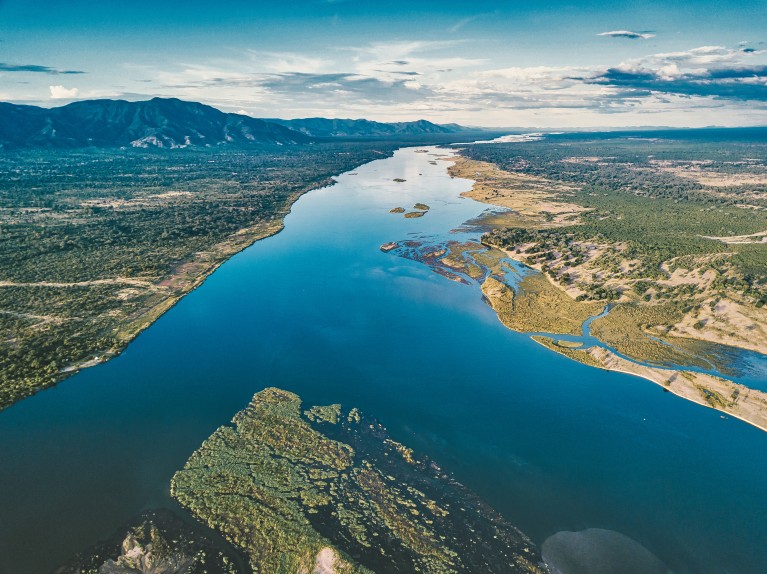Leggi in italiano Aerial view of the Lower Zambezi in Zambia. Credit: golero/ E+/ Getty Images. 
Climate change mitigation policies introduced in wealthier countries could unintentionally harm the river basins in developing regions, a study published in Nature Climate Change finds.
A key measure to curb climate change is to put a price on greenhouse emissions, either by imposing a ‘carbon tax’, or by introducing trading schemes where states and companies can buy and sell permits to release emissions. Carbon prices can be set globally, or differentiated at the regional level, typically by making them higher in industrialized countries than in developing ones. The authors, led by Andrea Castelletti at Politecnico di Milano, wanted to understand whether the two approaches can have a different impact on developing countries. They analysed the Zambezi Watercourse (ZW) in Southern Africa, one of the world’s largest transboundary river basins. It provides irrigation and transportation to 40 million people, projected to become 70 million by 2050. This area, hosting the unique Victoria Falls, is representative of many river basins where large dams are being planned, in order to meet the needs of African growing economies through hydropower production and irrigation supply for agriculture.
The authors used the Global Change Analysis Model (GCAM), a widely adopted integrated assessment model which is used also in the IPCC reports, to generate more than 30,000 scenarios considering different socioeconomic changes and their effects on natural systems. They relied on previous studies to select a subset of more than 7,000 scenarios, that they combined with climate data and projections with alternative mitigation policies, in particular with global or regionally differentiated carbon prices. “We performed an exhaustive exploration, given that a much smaller number of scenarios is typically selected” says Matteo Giuliani of Politecnico di Milano, first author of the study.
The outcomes show that, when emission prices are regionally differentiated, irrigation demands can be twice as high than under globally uniform prices1. That is because regionally differentiated carbon emission prices can encourage land grabbing, a practice where wealthy countries invest in large agriculture projects in African regions, taking advantage of a low price to pay for Land-Use Change (LUC) emissions.
In Southern African regions, under the regionally fragmented scenario, crop water consumption increases on average by 400% (and up to 700%) compared to 2005 levels, due to extensive agriculture. Under a globally uniform scenario of emission prices instead crop water demand increases on average by 200% (and up to 300%). The average increase in the whole continent is 140%. Such a high demand can reduce water flowing into the delta, threatening hydropower generation, fishing, habitats for wildlife, and all components of what researchers call the water-energy-food systems. Southern and Western African regions include about 60% of all African dams currently planned or under construction and might be affected in the future by the dynamics identified by the study.
“This research develops one of the first ‘glocal’ studies, where the impacts of global mitigation policies are downscaled and analysed at the finer river basin scale” says Castelletti. “It would have been impossible only 20 years ago to work with these kinds of models, and this means global policies no longer have to rely on the intuition of a few economists, but they are becoming more and more model-and-evidence-based”.
“This study is highly innovative because it uses a unique combination of simulation tools, operating at the global and river basin levels” says Claudia Ringler, Deputy Director of Environment and Production Technology Division of the International Food Policy Research Institute, Washington D. C. who did not participate in the study. “A possible limitation is that carbon price implications on fossil fuels affecting fertilizers and transportation of food were not considered simultaneously”.
